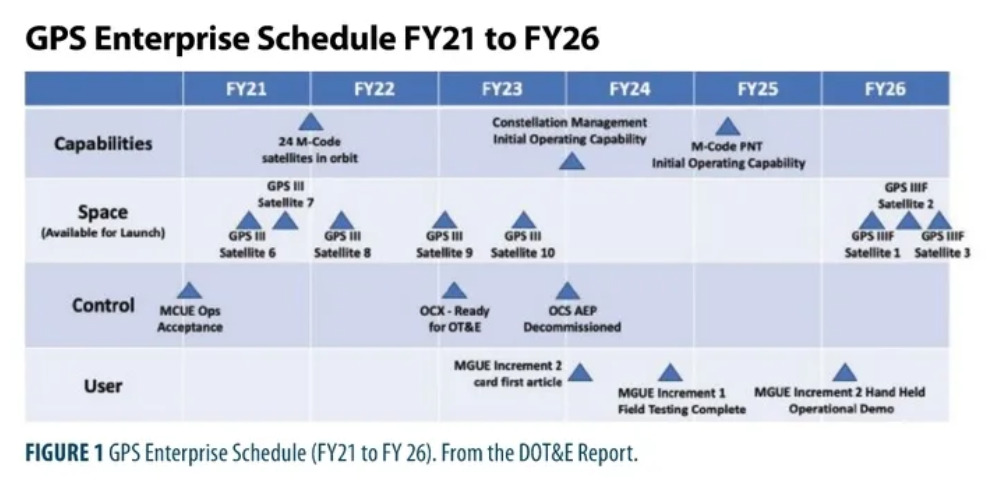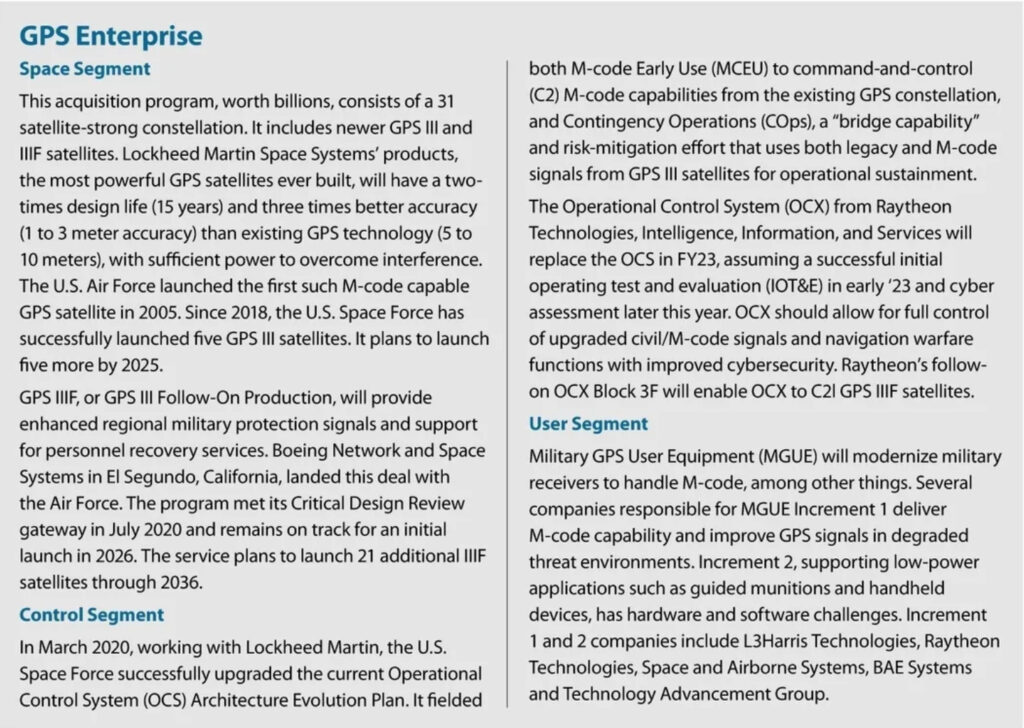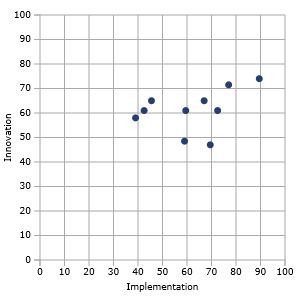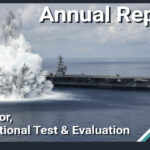Warfighting systems rely on GPS to provide cyber-secure and accurate positioning, navigation and timing (PNT). A recent Department of Defense Operational Test and Evaluation (DOT&E) report examined, along with all U.S. tactical weaponry, the adequacy of current GPS equipment, test strategies and plans for future operational effectiveness. It found some causes for concern.
For almost 20 years, the Department of Defense (DOD) has conducted a multi-billion dollar GPS modernization and sustainment effort, centered around M-code capability. A military-only GPS toughening solution, M-code will provide more powerful and encrypted anti-jam, anti-spoof, cybersecure signals once fully activated. Its “system of systems” requires three interrelated components to work effectively:
• broadcast-capable satellites (space),
• an overhauled and updated ground system administer to the complex software (control) and
• user equipment for warfighters to receive and put into theater play the PNT information (user).
Multiple programs of record feed into this enterprise solution, across all three segments (see Sidebar).
Under the leadership of its new director, Nickolas H. Guertin, the DOD Operational Test and Evaluation (DOT&E) tracks 234 acquisition programs across the department. It provides independent, unbiased assessments to ensure the DOD has the edge necessary to protect homeland and allies, and to advance the United States’ strategic objectives. The Fiscal Year 2021 DOT&E Annual Report introduction summarizes the organizational imperative as:
“There are three Imperatives of Combat. The first is “believe in your mission;” the second is “believe in your commanders.” For the operational test community, the third imperative holds special significance: “believe in your weapons and equipment.” Our soldiers, sailors, airmen, marines, and guardians, along with DOD leadership and the Congress, count on us to tell them when and where to place that faith. We must not let them down.”

Bottom Line
According to the Report, U.S. military efforts to field jam-resistant GPS weaponry not only run behind schedule, they continue to fall behind commercial tech. Because “the lack of M-code capable receivers limits the M-code use by U.S. and allied warfighters,” branches of the Armed Forces are now sourcing directly from commercial suppliers.
The OCX ground control system, destined to manage the GPS III constellation and M-Code-enabled military GPS user equipment (MGUE), has yet to fully and viably appear on the scene, though its initially projected delivery date has passed.
“Full control of modernized civil and M-code signals and navigation warfare functions, as well as improved cybersecurity, continue to be delayed due to ongoing development and deployment delays of the next generation Operational Control System (OCX), along with delays in the fielding of M-code capable receivers for use by the U.S. and allied warfighters.”
Delays of final software and hardware builds of MGUE Increment 1 equipment, even as Increment 2 has gotten underway, have impacted test schedules and created fears that, once finally produced and fielded, the equipment may incorporate obsolete components or be itself obsolete.
“Consequently, the Army and Marine Corps decided not to field their respective platforms with the ground-based MGUE Increment 1 card…the Services have turned to commercially available, MGUE-derived M-code receivers to continue meeting PNT requirements. Those systems will undergo operational testing outside of the MGUE Increment 1 program of record.”
Sober Evaluation
The DOT&E plans and assesses. On the planning side, its GPS Enterprise Test and Evaluation Master Plan (E-TEMP) continues to evolve. DOT&E partially revised the E-TEMP in 2021 but plans to make additional adjustments to address space-threat requirements, cyber-testing needs, and the concurrent delivery of OCX, MGUE Increment 2, upgraded Nuclear Detonation Detection System control system, GPS IIIF satellites, and OCX Block 3F.
Testing related to these plans occurred in 2020.
OCS, COps and MCEU. The U.S. Space Force Space Training and Readiness Space Delta 12, 4th Test and Evaluation Squadron probed both operations and cybersecurity of OCS, COps, and MCEU at three different locations: the GPS Master Control Station at Schriever Space Force Base, the GPS Alternate Master Control Station at Vandenberg Space Force Base and the GPS monitoring and ground antenna facility at Canaveral Space Force Station.
GPS III Satellite Simulator. The 4th Test and Evaluation Squadron also conducted cyber-resiliency testing of Lockheed Martin’s sat sim at its contractor facility.
More testing looms on the horizon (see Figure 1 from the DOT&E Report). The results from current testing revealed a mixed bag.
While the report does not break down its three criteria of operational effectiveness, suitability and survivability in terms of the space, control and user segments, I have attempted to do so in Table 1. The conclusions are mine and mine alone.
The bottom line: Space and control segments remain effective and suitable, but not cyber- or space-threat survivable. The user segment comes up short on all fronts.
The M-code receiver issue presents exceedingly complex technical challenges. Dr. Mikel Miller, vice president for PNT Technologies at Integrated Solutions for Systems (IS4S) and former Air Force Senior Scientist for PNT Technologies for the AF Research Laboratory, explained:
“A significant reason for the current lack of M-code capability is that M-code receivers need to be embedded into complex, closed, and proprietary systems of systems. This leads to a costly and time-intensive process to integrate and certify new technology into today’s existing vendor-locked proprietary PNT systems.”
Miller also currently serves as program manager at IS4S for the Air Force’s Resilient Embedded GPS-inertial (R-EGI) project.
As would be expected, the DOD continues to work the problem hard. “The DOD’s push to acquire PNT technology using a Modular Open System Approach (MOSA)-based acquisition method will go a long way to correct this shortfall and remove the barriers that currently inhibit rapid technology insertion and refresh,” Miller said.

Moving Forward
The deficiencies are clear. The DOD lacks the necessary MGUE to widely integrate M-code cards and receivers into various aircraft, ships, vehicles, and other weapon systems. Space and control systems, while operational, need fine-tuning in terms of human-interface, cybersecurity and space environment resilience.
The report gives several practical recommendations to the U.S. Space Force to minimize risk to warfighters and maximize probability of mission success in conflict:
• Jointly develop standardized operational test procedures for M-code PNT performance
• Plan and test GPS Enterprise against projected space threats
• Incorporate M-code and GPS Enterprise-wide testing in existing war games
• No-notice swap control stations during the OCX IOT&E test drill
• Include cyber survivability requirements in all GPS Enterprise acquisition programs
At least one GPS expert outside the Beltway thinks this plan should be more strategic. Until a centralized planning authority with control over the funding can provide cohesive policy and enact decisions, the U.S. GPS Enterprise will continue to fall behind adversaries, including China in particular.
“There are some exceptions, but I envy the Chinese with their strong central policy over all of PNT. They are rapidly overtaking us, and in fact have passed us on several issues.”
Complying with the DOT&E recommendations will—or would—be a start, but a larger structural overhaul may be needed. Difficult or even painful as it may be for some, only such a bellwether change in strategic operations can assure critical GPS capabilities will provide American forces the critical advantage in the complex, dynamic multi-domain operational environment.







